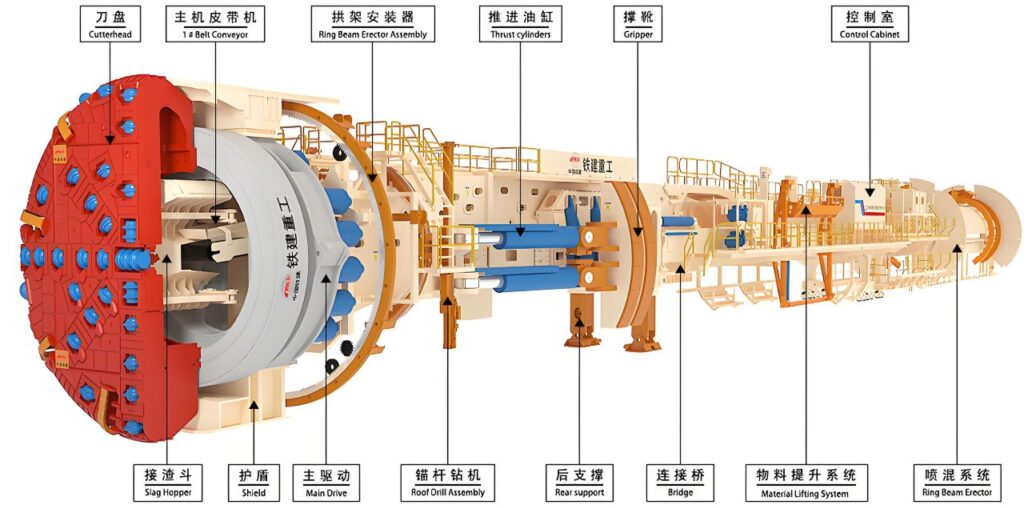How a tunnel-boring machine drills underground? A tunnel-boring machine (TBM) is a powerful piece of equipment used to excavate tunnels through various types of ground material, such as soil, rock, and sand. Here's an overview of how a TBM drills underground:

I. Summary:
- Cutterhead rotates to break ground.
- Excavated material is removed by conveyor belts or screws.
- Tunnel lining is installed for support.
- Hydraulic thrust moves the TBM forward.
- Guidance systems ensure accuracy.
II. Details:
1. Cutterhead Rotation:
- The TBM has a large circular cutterhead at the front, fitted with cutting tools like disc cutters or blades.
- As the cutterhead rotates, these tools break up the material at the tunnel face.
2. Excavation:
- The broken material is funneled through openings in the cutterhead into the machine's chamber.
- Inside the chamber, conveyor belts, buckets, or screw conveyors transport the excavated material to the rear of the TBM for removal.
3. Stabilization:
- To prevent the tunnel from collapsing as the machine advances, the TBM can install tunnel linings (usually concrete segments) as it progresses. These segments are placed in a circular pattern to support the tunnel walls.
- In soft ground, some TBMs use pressurized systems to support the tunnel face and stabilize the surrounding material.
4. Propulsion:
- TBMs are equipped with hydraulic thrust cylinders that push the machine forward against the tunnel lining. This allows the cutterhead to advance into new ground, continuously boring deeper into the earth.
5. Navigation:
- The TBM is controlled and navigated using lasers, GPS, or other guidance systems to ensure it follows the correct path underground, even over long distances.
6. Ventilation and Safety:
- As TBMs move through confined underground spaces, ventilation systems ensure a constant supply of fresh air. Additionally, the machine is equipped with safety features, such as sensors for monitoring pressure, temperature, and ground conditions.
III. Operation Mechanisms:
When initiating a tunnel project, engineers first analyze the geology of the proposed route to determine the appropriate type of TBM required - whether it be designed specifically for soft soils or hard rocks.
Once positioned at the starting point, the TBM begins drilling by engaging its cutting head against the tunnel face. Disc cutters rotate at high speeds, chipping away at solid rock while roller bits crush softer sediments. Excavated material is then conveyed back through the machine and deposited outside the tunnel entrance for removal via trucks or other transportation methods.
As the TBM moves forward, it simultaneously places segmental liners which lock together forming an interlocking ring structure. This not only reinforces the tunnel walls but also provides a smooth surface for subsequent construction activities such as electrical wiring installation or track laying.
The use of TBMs can significantly reduce construction time compared to conventional methods, leading to lower overall costs and shorter periods where local communities might experience inconveniences due to ongoing worksites.




